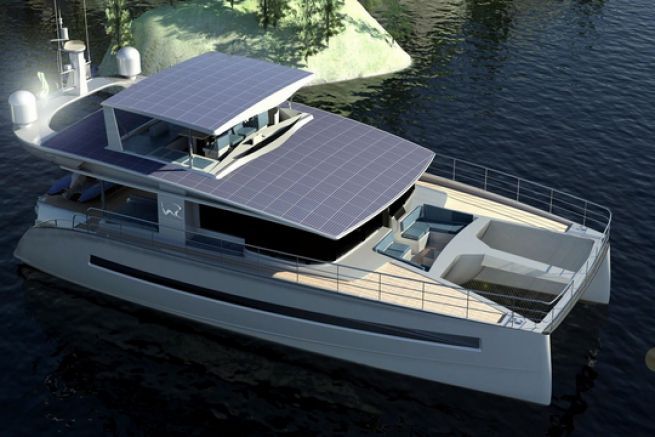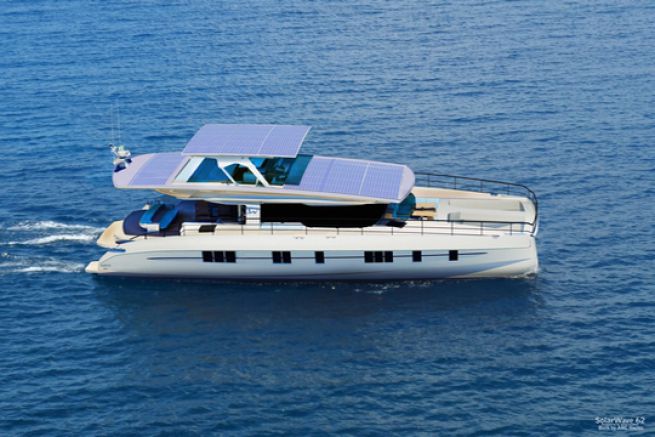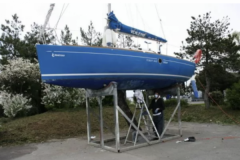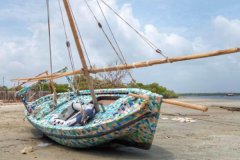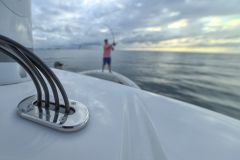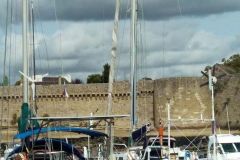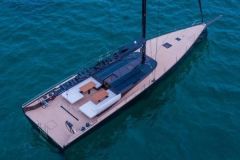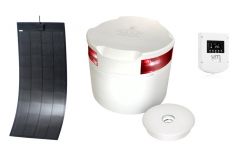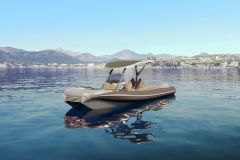The basic observation, conventional propulsion does not allow sufficient range
Conventional motor boats are powered by a diesel engine. In addition, an on-board generator supplies all household appliances. Depending on the size of the boat, 3 or 4 diesel engines are used to drive the boat and operate the equipment. Even sailboats need a diesel engine, for port manoeuvres or even in certain weather conditions. At anchor, the diesel engine provides the necessary energy supply for passengers. On the other hand, most boats use gas for cooking.
To recharge water and energy stocks, it is often necessary to return to port every two or three days (depending on the boat). Larger boats or racing boats have a watermaker, which allows them to transform salt water into drinking water. But as with heating or air conditioning, the latter requires energy.
Finally, the use of a combustion engine is inevitably associated with noise and vibration, and releases oil into the water. On the other hand, a motor boat, even if it has a long range, will be limited in distance.
Use only solar energy to navigate and live on board
Solarwave-Yachts has developed a system to reduce the operating hours of the diesel engine. The yard has equipped its boats with the latest generation of ultra-efficient solar panels, which recharge lithium batteries. Simpler, this system requires less maintenance and is less expensive to operate than any fuel-powered system, while guaranteeing maximum comfort and independence (less noise and more range). The particular configuration of the components produces a unique energy balance: solar panels produce more power than is required for life on board and propulsion by electric motors. As a result, the batteries are recharged even during navigation.
The hull has been optimized by the fluid mechanics and the tanks tested to be as light as possible. Thanks to a carbon fibre and epoxy resin construction, a big weight reduction allows the boat to be lighter, and therefore to consume less. Finally, the hull cladding is made of rigid and ultra-light honeycomb with real laminated wood veneer. The furniture and tanks are structurally integrated into the hull, which significantly reduces weight. Each kilo less requires less energy to move the boat.
Solarwave boats weigh half as much as a traditionally built and powered boat. They have less water drag and friction than other boats, which makes them fast with self-sufficient propulsion.
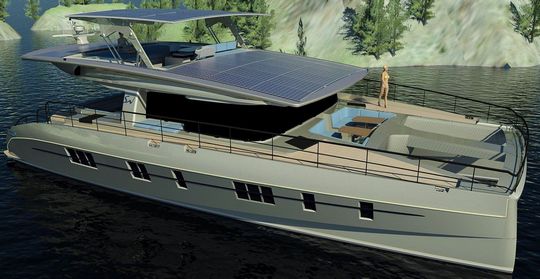
True offshore cruising catamarans, they can sail the world's seas with almost unlimited autonomy, even when the sun is not shining. In prolonged periods of bad weather, the generator starts automatically when the batteries are low.
The energy is stored in the batteries and can also be used in bad weather, or at night. Lithium batteries provide the energy needed for both propulsion and household appliances - 230 V (110 V) day and night (24/7), TV, air conditioning, ice machine, watermaker, laptop computer and much more.
The solar panels are integrated into the roof, so there is no wind connection. The batteries and motors are inside the boat, in a dry and safe place. All wiring is tin-coated and all plugs are specially designed to stop water and moisture. All parts exposed to the marine environment are made of corrosion-resistant materials. All components are virtually maintenance-free. Thus the operating costs are much lower than on a comparable catamaran with conventional propulsion.

